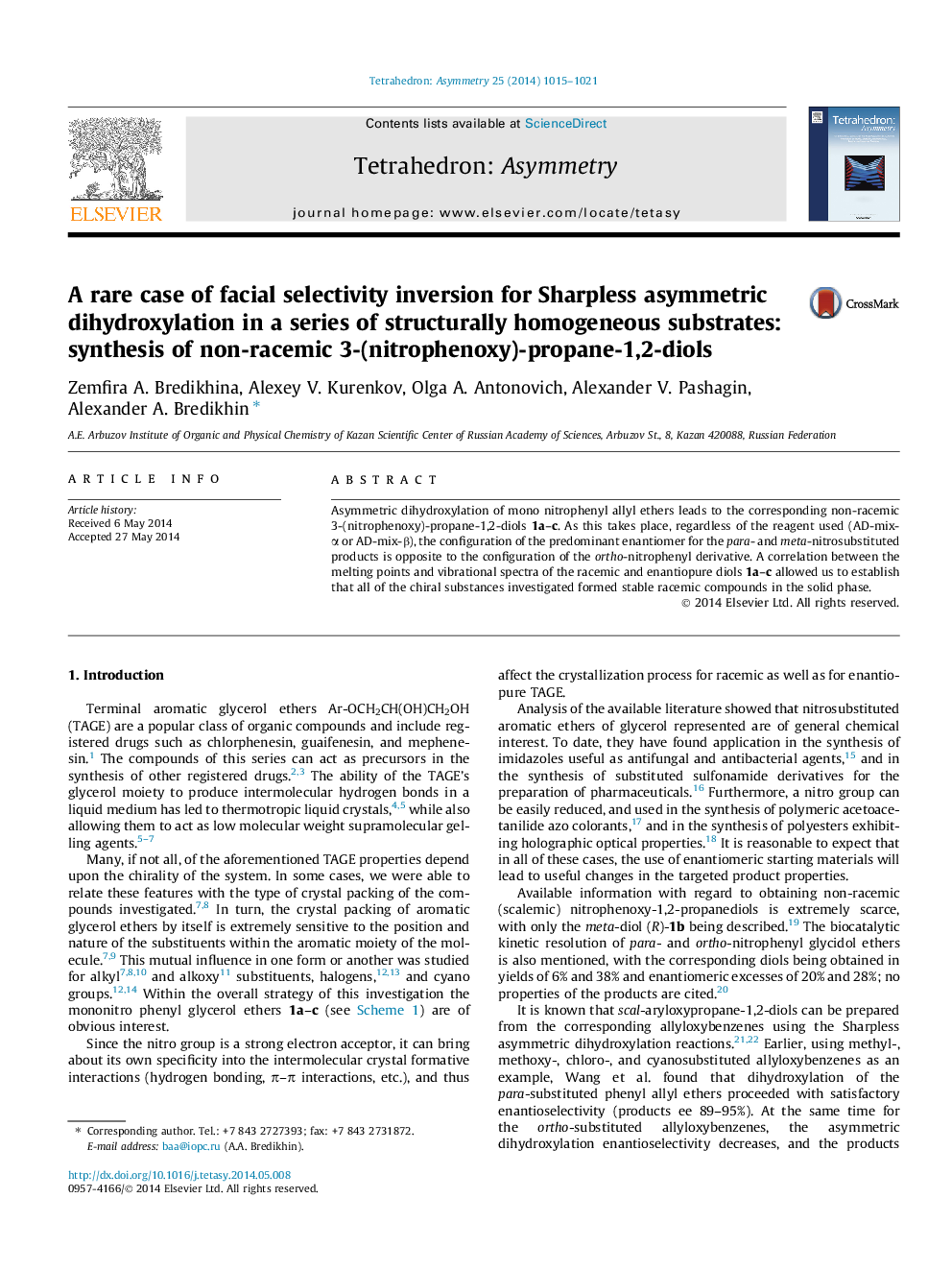| Article ID | Journal | Published Year | Pages | File Type |
|---|---|---|---|---|
| 1345154 | Tetrahedron: Asymmetry | 2014 | 7 Pages |
Asymmetric dihydroxylation of mono nitrophenyl allyl ethers leads to the corresponding non-racemic 3-(nitrophenoxy)-propane-1,2-diols 1a–c. As this takes place, regardless of the reagent used (AD-mix-α or AD-mix-β), the configuration of the predominant enantiomer for the para- and meta-nitrosubstituted products is opposite to the configuration of the ortho-nitrophenyl derivative. A correlation between the melting points and vibrational spectra of the racemic and enantiopure diols 1a–c allowed us to establish that all of the chiral substances investigated formed stable racemic compounds in the solid phase.
Graphical abstractFigure optionsDownload full-size imageDownload as PowerPoint slide
(R)-3-(2-Nitrophenoxy)-1,2-propanediolC9H11NO5Ee = 99.2% (ee from HPLC)[α]D20 = −0.5 (c 1, EtOH); [α]43620 = −4.2 (c 1, EtOH)Initial source of chirality: (R)-3-chloro-1,2-propanediolAbsolute configuration: (R)
(R)-3-(3-Nitrophenoxy)-1,2-propanediolC9H11NO5Ee = 99.2% (ee from HPLC)[α]D20 = −15.0 (c 1, EtOH); [α]43620 = −31.1 (c 1, EtOH)Initial source of chirality: (R)-3-chloro-1,2-propanediolAbsolute configuration: (R)
(R)-3-(4-Nitrophenoxy)-1,2-propanediolC9H11NO5Ee >99% (ee from HPLC)[α]D20 = −17.4 (c 1, EtOH); [α]43620 = −37.2 (c 1, EtOH)Initial source of chirality: (R)-3-chloro-1,2-propanediol; AD-mix-αAbsolute configuration: (R)
